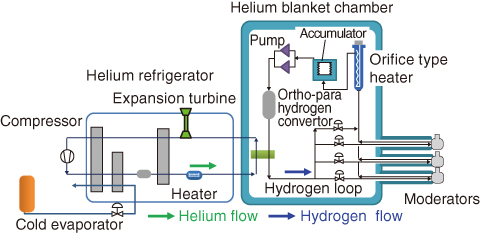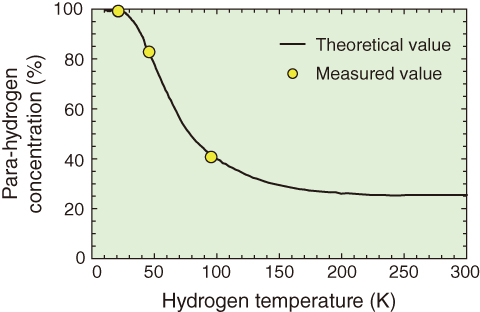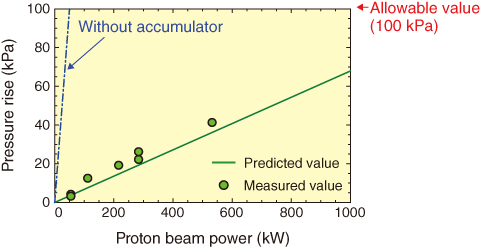
Fig.5-36 Cryogenic hydrogen system for the J-PARC spallation neutron source

Fig.5-37 Measured para-hydrogen concentration during a cool-down process

Fig.5-38 Effect of proton beam power on pressure rise in the hydrogen loop
At J-PARC, 3 GeV protons with a power of 1 MW are injected onto a mercury target at a repetition rate of 25 Hz, producing fast neutrons via the spallation reaction. The high-energy neutrons are slowed to thermal and/or cold neutrons in hydrogen moderators, which receive supercritical hydrogen at 1.5 MPa and below 20 K. We aimed to maintain the para-hydrogen concentration in the hydrogen moderator above 99%. Cold neutrons are effectively slowed by the excitation of para-hydrogen to ortho-hydrogen. Moreover, the neutron scattering cross section of para-hydrogen is lower than that of ortho-hydrogen by two orders of magnitude. Therefore, we obtained a pulsed cold neutron profile with a narrow full-width-half-maximum (approximately 100 μs) and a short tail. These pulsed neutrons are suitable for crystal and magnetic structural analyses.
The presence of ortho-hydrogen and large changes in hydrogen density degrade the pulse shape. Therefore, we developed a cryogenic hydrogen system in which supercritical para-hydrogen circulates at the largest flow rate thus far achieved (9.5 m3/h). This large flow rate reduces the fluctuations in the moderator temperature to below 3 K (Fig.5-36).
We installed an ortho-para hydrogen convertor with a catalyst of hydrous ferric oxide. Furthermore, we developed a hydrogen gas sampling system, which safely fills a glass cell with hydrogen gas obtained from a high-pressure, low-temperature environment. The para-hydrogen concentration was measured during the cool-down process by a laser Raman spectrometric method. The measured and theoretical para-hydrogen concentrations closely match and satisfy the requirements at 20 K (Fig.5-37).
One major challenge is to mitigate the pressure fluctuations below 0.1 MPa. These fluctuations, caused by large stepwise heat loads when the beam is on, are problematic because supercritical hydrogen behaves as an incompressible fluid and lacks a vapor-liquid interface. To overcome this problem, we developed a novel equipment with a bellows structure, called an “accumulator.” Pressure fluctuations are mitigated by spontaneous expansion or contraction of the bellows, which enclose helium gas (boiling point = 4.2 K). At beam powers below 532 kW, the measured pressure rises agree with the predicted values. We expect that the pressure rise can be maintained below the upper allowable limit at a beam power of 1 MW (Fig.5-38).
This technology will enable the steady production of high-quality cold neutron beams at the rated 1 MW operation. Potentially, it will advance neutron beam research, thereby contributing to science, technological developments, and industrial promotion.